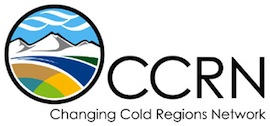
Richard Janowicz
Water Resources Branch, Yukon Department of Environment
Research areas
Climate warming in recent decades has produced changes in Yukon hydrologic response including an increase in flooding events. As a result, Yukon’s Water Resources Branch (WRB) has received funding and technical support to improve hydrologic monitoring, flood forecasting and climate and water research. With funding provided through the Yukon Water Strategy, WRB has recently completed the expansion of the Yukon hydrometric network with the addition of 29 stations as well as the conversion of all stations to real time. The WRB is in the final year of a two year project with funding through Public Safety Canada’s National Disaster Mitigation Program (NDMP) to improve their flood forecasting and monitoring capabilities. This funding is being used to develop an enhanced operational flood forecasting system, which is being carried out through the University of Saskatchewan’s Global Institute for Water Security with collaboration from Environment Canada, and, to update and expand WRB’s remote meteorological network which is used to provide input data for flood forecasting. A Global Waters Futures (GWF) study is underway to develop an ice jam related flood forecasting model for the northern Yukon community of Old Crow. The WRB is nearing completion of a flood hazard mapping project which will produce flood zone imagery for the 14 Yukon floodplain communities.
The Wolf Creek Research Basin is continuing to thrive and develop with recent Yukon funding opportunities. Some of the NDMP funding was used to enhance Wolf Creek’s meteorological station network. Wolf Creek meteorological network data continues to be downloaded and archived by CCRN’s data storage facility. A 22 m walk up platform tower was installed at the forest site to replace the existing boreal forest station. Instrumentation at this station includes eddy covariance flux (H2O and CO2) instruments to complement similar systems at the buckbrush (large shrub) and plateau (short shrub) sites. This instrumentation is contributing to NASA ABoVE’s aerial and satellite based carbon flux experiment by providing ground truthing data. Two new snow water equivalent sensors were recently purchased for the Wolf Creek Solid Precipitation and Snowpack Intercomparison Experiment study. The 2KR SSC311 and Hydroinnova SnowFox complement the existing five instruments for measuring solid precipitation and six for measuring snow water equivalent. The Global Water Futures initiative has provided significant benefits to the Wolf Creek project. With core funding through the project, an agreement between WRB and McMaster University has been established to accommodate two Global Water Futures staff in the Whitehorse WRB office to carry out Wolf Creek and other GWF activities. Wolf Creek celebrated its 25th anniversary last September with a Whitehorse workshop. The well attended event included plenary day sessions, a public evening session and a field trip to basin. The Wolf Creek project was formally recognized by the Government of Yukon, for fostering climate change research leading to evidence based decision making, during a special tribute by the Environment Minister in the October 24, 2017 sitting of the legislative assembly.
